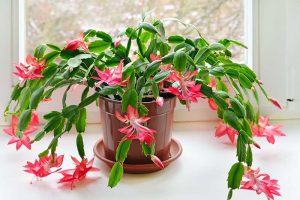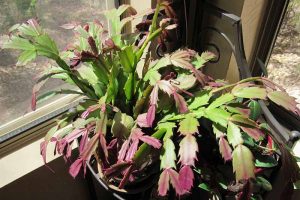Stapelia grandiflora
Plants feed us and provide us with fresh air to breathe. They beautify our landscapes, and brighten up our homes.
And when we grow houseplants like starfish flower – they provide us with a source of fascination and curiosity!
If you’re thinking of growing a starfish flower or have already introduced one into your home, congratulations!
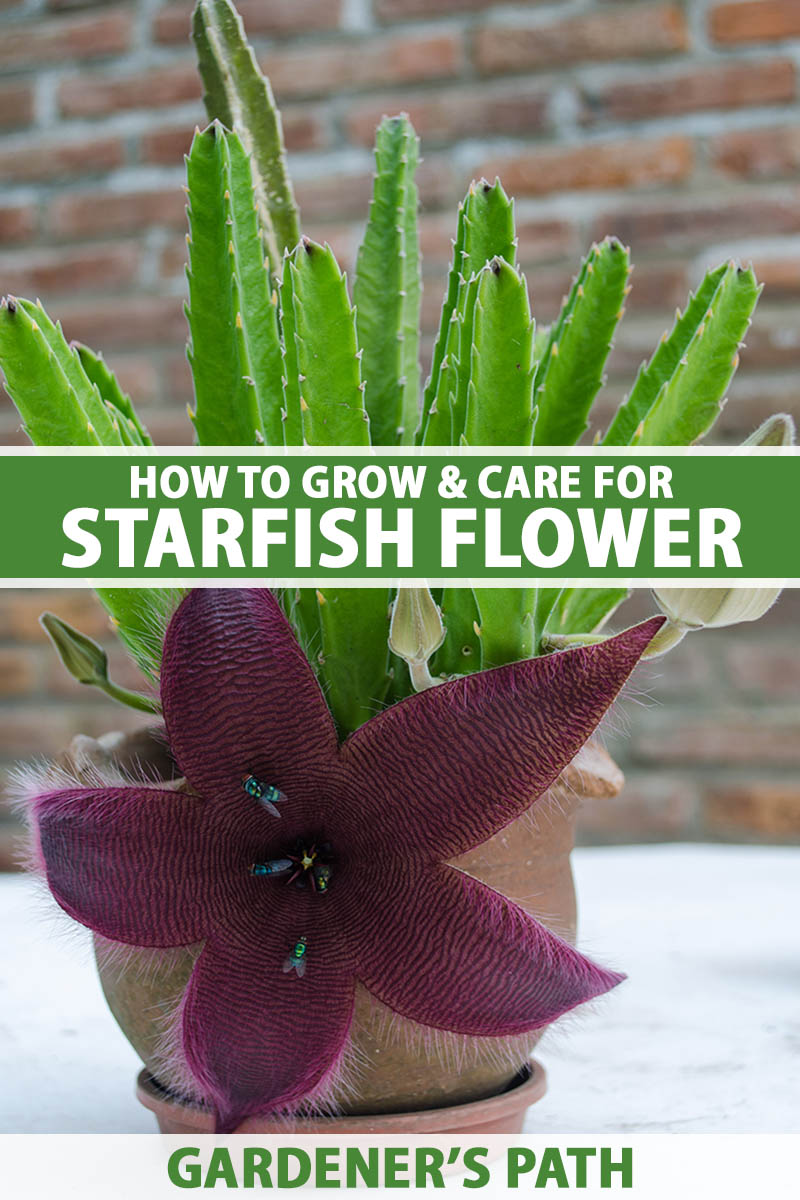
We link to vendors to help you find relevant products. If you buy from one of our links, we may earn a commission.
And welcome to the discerning club of folks who are willing to put up with stinky flowers in the name of gorgeous blooms.
We’re going to cover everything you’ll need to know to care for your succulent plant.
Here’s a sneak peek at what we’re going to discuss:
What You’ll Learn
What Is Starfish Flower?
Starfish flower, Stapelia grandiflora, is a leafless succulent with upright or ascending stems that are about half an inch to one inch wide. Plants form clumps of stems that can have a 20 inch spread.
Individual stems can reach up to 12 inches tall and are pale green to reddish, depending on sun exposure.
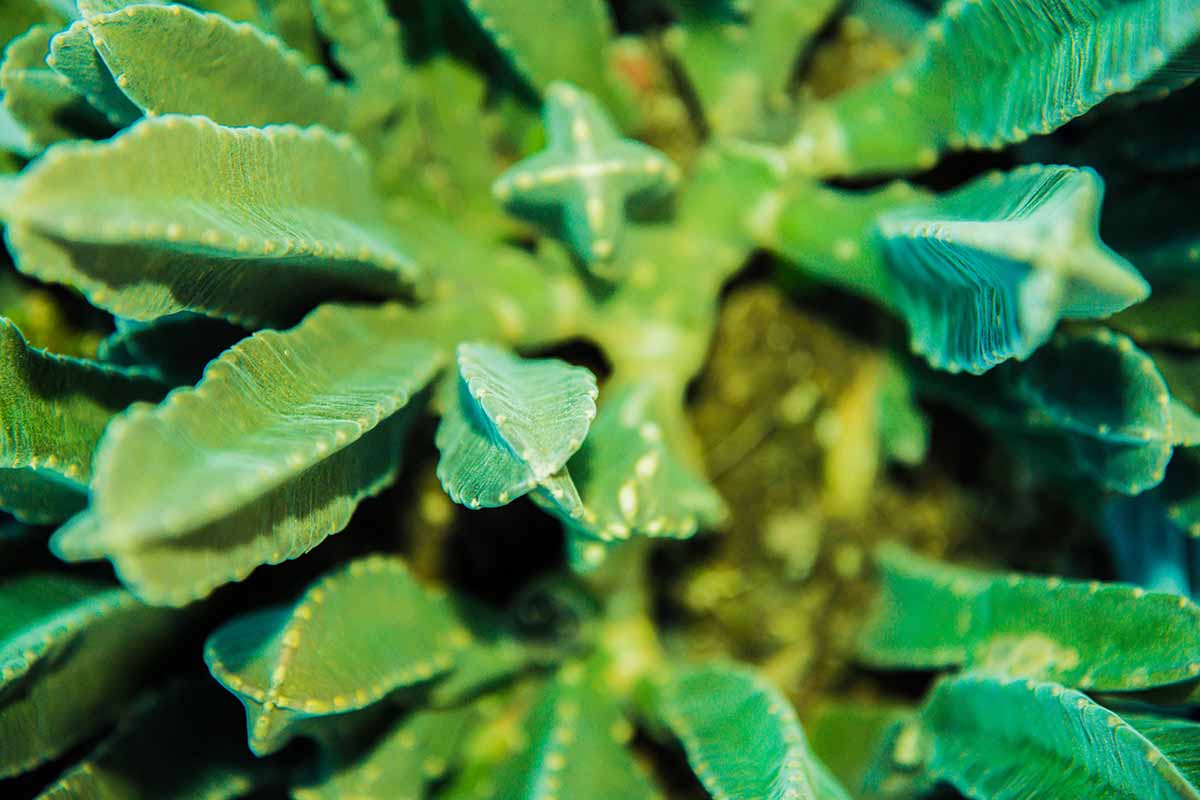
The stems of this succulent have four angles, and these are punctuated with “tubercles,” small protuberances that make the plant look like a spined cactus – although these plants are not prickly in the least!
Produced from late summer to fall and born at the base of the plant, flower buds grow to look like inflated balloons, then open to reveal star shaped flowers, each with five long petals.
These blooms reach six inches wide and are a reddish-brown to purple color. The centers of the flowers are covered with long purple hairs while the petals are covered with long white hairs that are almost fur-like.
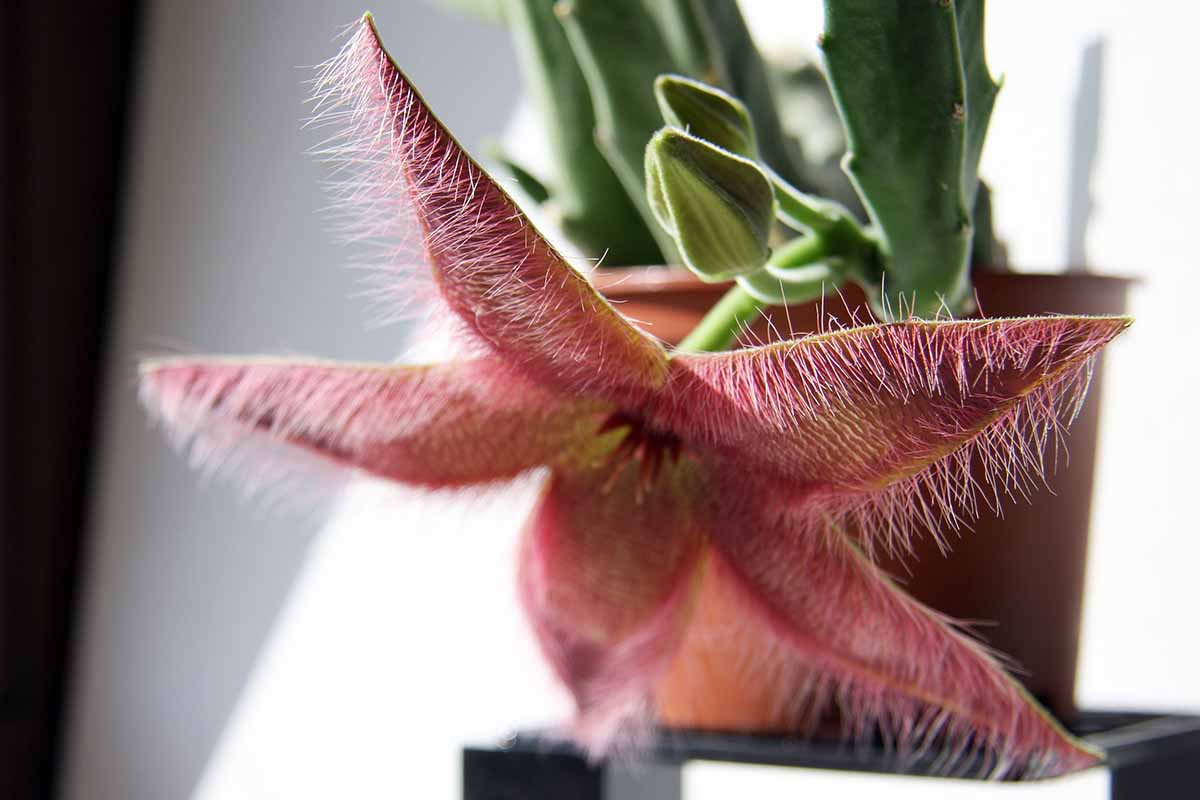
The surface of the flowers has a furrowed texture and pattern that looks similar to a cross section of raw meat.
This collection of traits is no accident – these flowers have evolved to lie around looking like dead animals to attract their preferred pollinators: flies.
And the flowers of this plant don’t only look appealing to flies, they also emit just the type of smell that would also convince a fly to go take a gander – a smell that gives these plants their nickname “carrion flowers.”
By the way, if you’re worried about attracting flies indoors, as long as you have screens on your windows, you shouldn’t expect them to invade your home.

As off-putting as this may sound, not everyone will notice the smell of the flowers.
However, the odor given off by these blooms does tend to get stronger the longer they are open.
As a solution to this problem, many houseplant gardeners keep these plants outside during the warm months, which is when blooms usually appear.
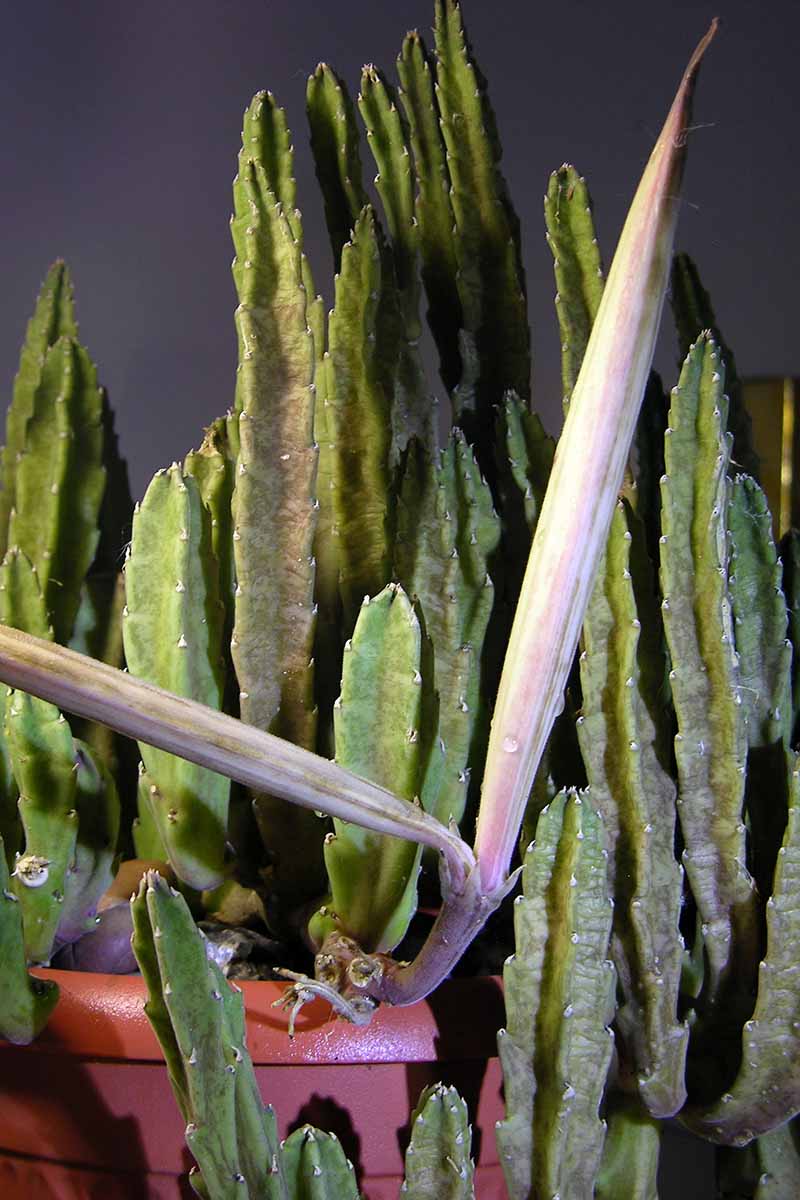
If flies oblige the plant, the flowers are pollinated and seed pods are produced, which are long and thin.
Seeds are slow to ripen, however, taking up to a year. At maturity, the seed pods split open, revealing their flossy contents.

Like the seeds of its relative, milkweed, the seeds of the starfish flower are attached to silky plumes, which enable them to be transported by the wind.
Cultivation and History
Classified botanically as Stapelia grandiflora, starfish flower is native to South Africa where it grows in dry shrubland or desert habitats.
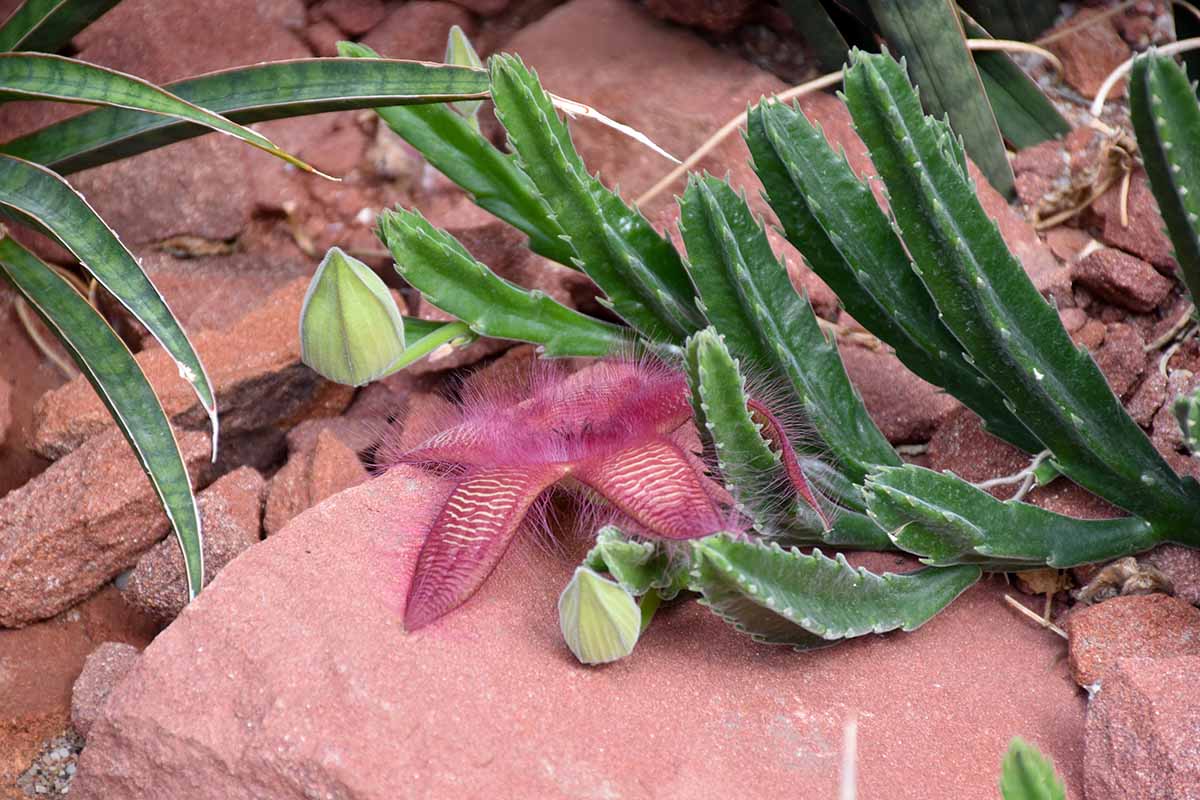
This member of the dogbane family or Apocynaceae may somewhat resemble a cactus, and is sometimes called “starfish flower cactus” – but cactus it is not!
In fact, it’s more closely related to milkweed, frangipani, and oleander than it is to prickly pears. It’s also a close relative to other stars of the houseplant world such as hoyas and string of hearts.
This plant’s genus, Stapelia, contains about 43 species, many of which also go by the name “starfish flower.” Complicating things a bit, members of two other genera, Orbea and Huernia, also go by the name “starfish flower.”
Care for these other species can be different from one to the other since they originate in different habitats, so try to find out which species you have before assuming its needs are the same as S. grandiflora!
Together these succulent plants with their starfish-shaped flowers are known as “stapeliads,” a term which comes from the genus name Stapelia. They are also known as “African starfish flowers” and “carrion flowers,” the latter because of their tendency to look and smell like rotting flesh!
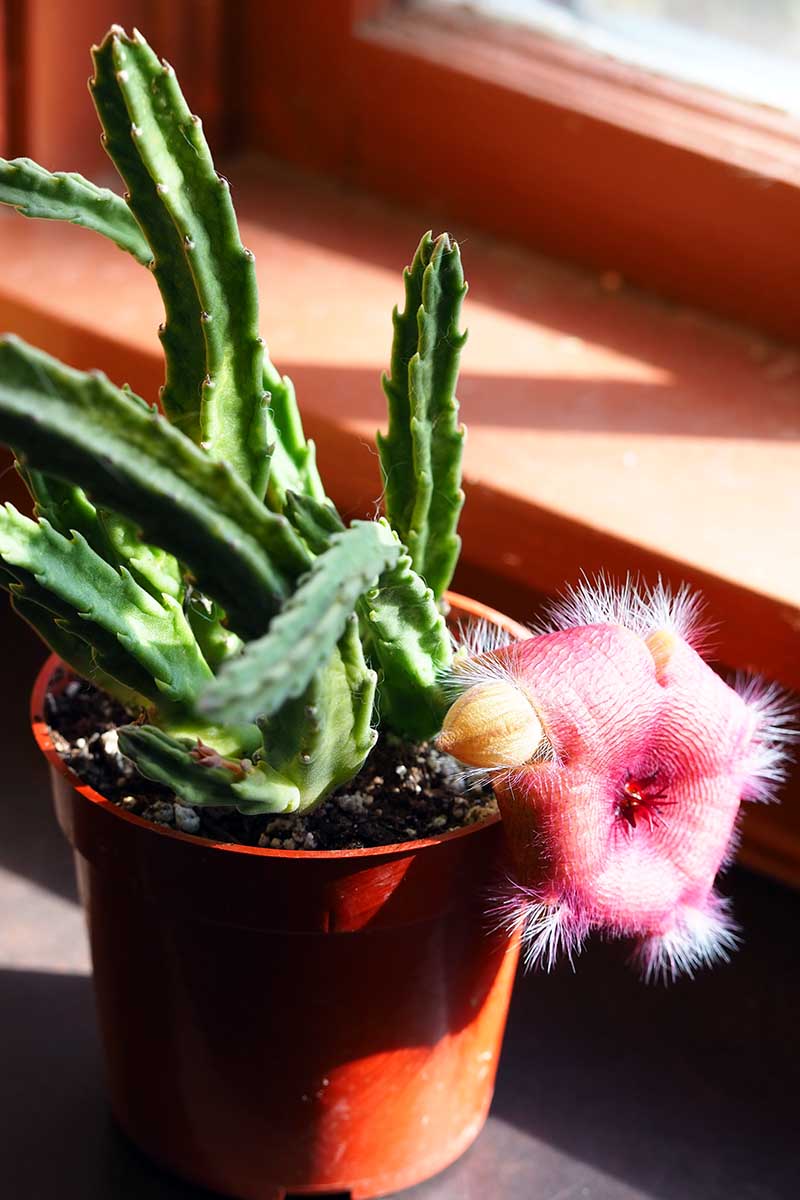
Though commonly cultivated as houseplants, S. grandiflora can also be grown outdoors year-round in USDA Hardiness Zones 9 to 11.
Starfish Flower Propagation
Starfish flower cactus can be propagated from seeds or cuttings, the latter of which is the easiest – and fastest – method.
From Seed
Let’s look into propagating starfish flower from seed first.
Here’s what you’ll need for this project: seeds, cactus and succulent growing medium, two- to four-inch nursery pots or propagation trays, a spray bottle for watering, and plastic bags or humidity domes.
Make sure you’re using seeds that have fully ripened, but are also fairly fresh since fresh seeds have better germination rates.
Fill the nursery pots or trays with growing medium, leaving a half an inch to an inch of space between the top of the soil and the rim of the pot.
Place the seeds one inch apart, and cover lightly with soil. Water with a spray bottle, then cover each pot with a humidity dome or plastic bag to keep humidity high.
Set the pots in a warm location, preferably between 75 to 95°F. You may need to use a heat mat to keep the seeds warm.
Need a heat mat? The Seedling Heat Mat is available in three sizes and can be purchased via Gardener’s Supply.
Place pots in bright, indirect light and keep them moist, but don’t let the growing medium get soggy as this can lead to damping off, which will kill young seedlings.
After germination, remove the pots from the heat mat. A few days after germination, remove the humidity domes.
Continue to water the seedlings with a spray bottle for at least the first month or so, keeping the growing medium slightly moist but not wet.
When seedlings are about two inches tall, watering can be reduced, and they can be repotted into their own four-inch pots.
Plants usually flower within two to three years when propagated from seed.
From Cuttings
Would you prefer to propagate starfish flower from cuttings? The best time for this project is in summer when conditions are warm.
Here’s what you’ll need: a parent plant to take cuttings from, cactus and succulent growing medium, pots, and sterilized scissors or plant snips.
Plan on taking at least three stem cuttings per small pot for a nicely filled out specimen. Take cuttings about an inch above the soil line, choosing stems that are four to five inches tall or more.
Allow cuttings to callus over in a shaded, dry location before planting – this may take up to two weeks.
While you wait for the succulent cuttings to callus, find some pots to use for propagating the cuttings.
Not sure which size pot to use?
Choose a pot on the shallow side, no more than four or five inches deep. As for width, that depends on how many cuttings you have.
For a pot that’s four inches wide, you could plant approximately three to eight cuttings, depending on how fat the stems are.

These four-inch terra cotta clay pots are a great size for a small group of cuttings and are available in packs of eight via Amazon.
After the cuttings have formed calluses, prepare the pots by filling them with dry growing medium. Leave an inch of space between the top of the soil and the rim of the pot.
Next, hollow out a space in the center of the pot that’s about two inches deep and wide enough to accommodate the group of cuttings.
Bundle up the cuttings close together and make sure that the callused ends are all at about the same level, then insert the ends of the cuttings into the hollowed space.
Press soil around the cuttings, and firm it down, so that the stems remain upright.
Place the pot in bright, indirect light for a week, but don’t water the cuttings until a week has passed.
After a week, start to water lightly when the growing medium dries out. Also, start to gradually transition the specimen to some direct sun exposure.
The cuttings should be well rooted within a month or so, at which point the plant can be cared for like a mature specimen. Plants can bloom within a year when propagated from cuttings.
Want more tips for this process? Learn more about propagating houseplants in our article!
How to Grow Starfish Flower
If you enjoy growing succulents because they are fairly easy to care for, starfish flower plants will not disappoint!
When grown indoors, the best possible light for starfish flower is direct sun exposure, so place your plant close to a south-facing window where it can soak up rays and where it will be more likely to produce its gorgeous flowers.
However, if conditions are extremely hot, offering this plant a little less direct sun for part of the day is best. At least four hours of direct sun per day is a good goal to aim for, while the rest of the plant’s daily light exposure should be bright, indirect light.
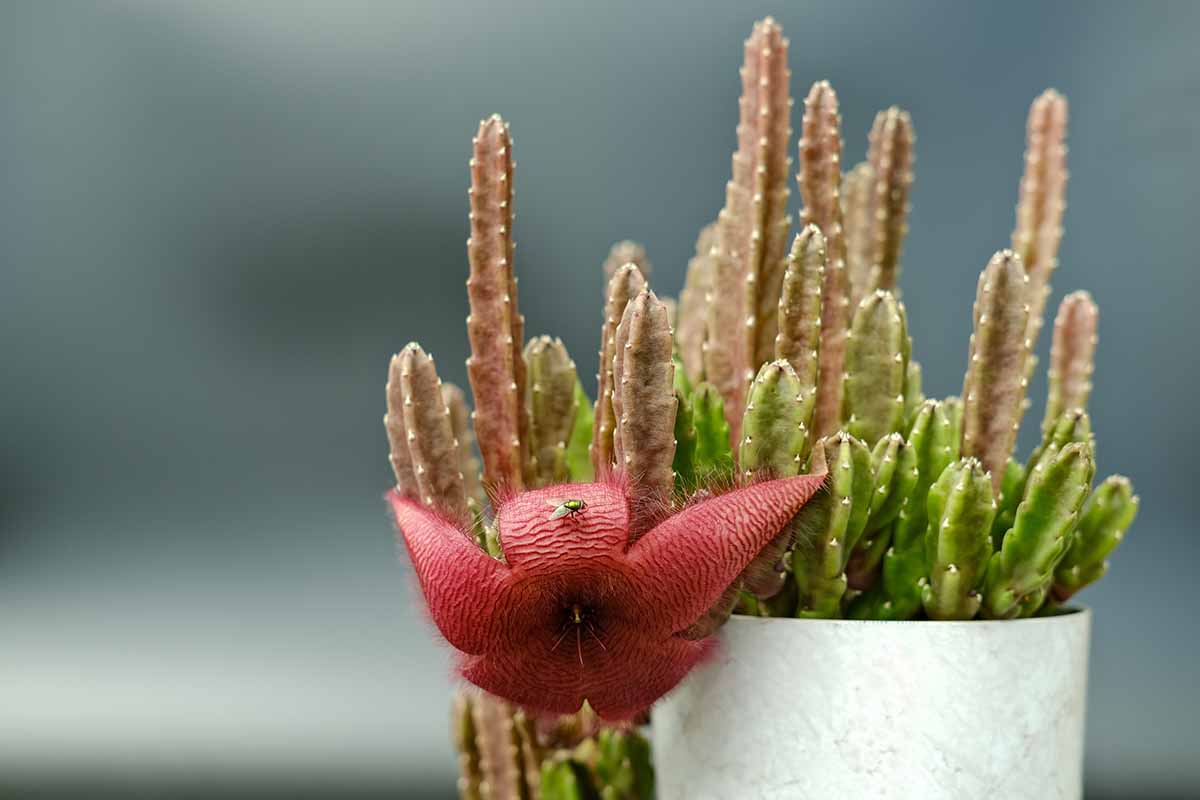
That goes for specimens grown outdoors as well, either all year in suitable USDA Hardiness Zones, or for the summer in other locations. They will thrive in full sun to part shade, but prefer part shade when conditions are hot.
When it comes to watering, allow the growing medium to dry out almost completely in between visits with the watering can, but check it more often when conditions are hot. If you aren’t sure, err on the side of underwatering rather than overwatering.
Since the growing medium won’t dry out as fast during the shorter, cooler days of winter, you won’t need to water as often then.
During cooler weather, try to avoid watering on overcast days to avoid subjecting the houseplant to conditions that are damp and chilly.
To ensure that the soil doesn’t become waterlogged, choose a growing medium designed for cacti and succulents that is gritty and has excellent drainage, such as Fat Plants San Diego Cactus and Succulent Growing Medium, a choice which is peat-free.

Fat Plants Cactus and Succulent Growing Medium
You can find it in a variety of package sizes available via Amazon.
You can also make your own succulent potting soil – learn how with our article!
If you’re creating your own growing medium or growing this plant in the ground in Zones 9 to 11, aim for a pH between 6.5 to 7.5.
Not sure what your soil pH is? Use a soil test kit to find out!
As for temperatures, these succulents enjoy the warmth provided by a sunny window, but as previously noted, when conditions heat up in midsummer, such as in homes without airconditioning, they prefer a partial day of indirect light.
You can do this by either moving the pot slightly farther from the window or by using a sheer, white curtain to filter the sunlight.
If you keep this succulent outdoors during the summer and live in a location with cold winters, be sure to bring it in before the mercury drops too much in autumn – these plants can be injured by temperatures below 40°F.
Although the smell from the plant’s blooms isn’t always noticeable, if yours is a bother, placing it outdoors during summer is a good solution.
Growing Tips
- Offer at least four hours of direct sun per day.
- Grow in a gritty potting mix for cacti and succulents with excellent drainage.
- Keep plants in temperatures above 40°F.
Maintenance
If you’re looking for a low maintenance houseplant, you’ve certainly got one with S. grandiflora, and it will produce flowers easily too!
Once the flowers have faded, feel free to snip them off with a pair of sterilized scissors or garden snips, but be careful not to cut off new blooms.
As these plants are accustomed to poor soils, fertilizer isn’t really required. However, if you’d like to encourage more vigorous growth, use a gentle fertilizer designed for cacti and succulents, such as Dr. Earth’s Succulence.
You’ll find Dr. Earth’s Succulence Cactus and Succulent Plant Food available for purchase in a 16-ounce pump bottle via Arbico Organics.
Fertilize once a month at most, from spring through summer.
As for repotting, this is another indoor gardening task you won’t have to worry about very often – every two years at most.
These plants prefer to be rootbound, and their stems can be allowed to spill over the edges of their pots. In fact, rather than repotting, you might prefer harvesting some cuttings to start a new houseplant.
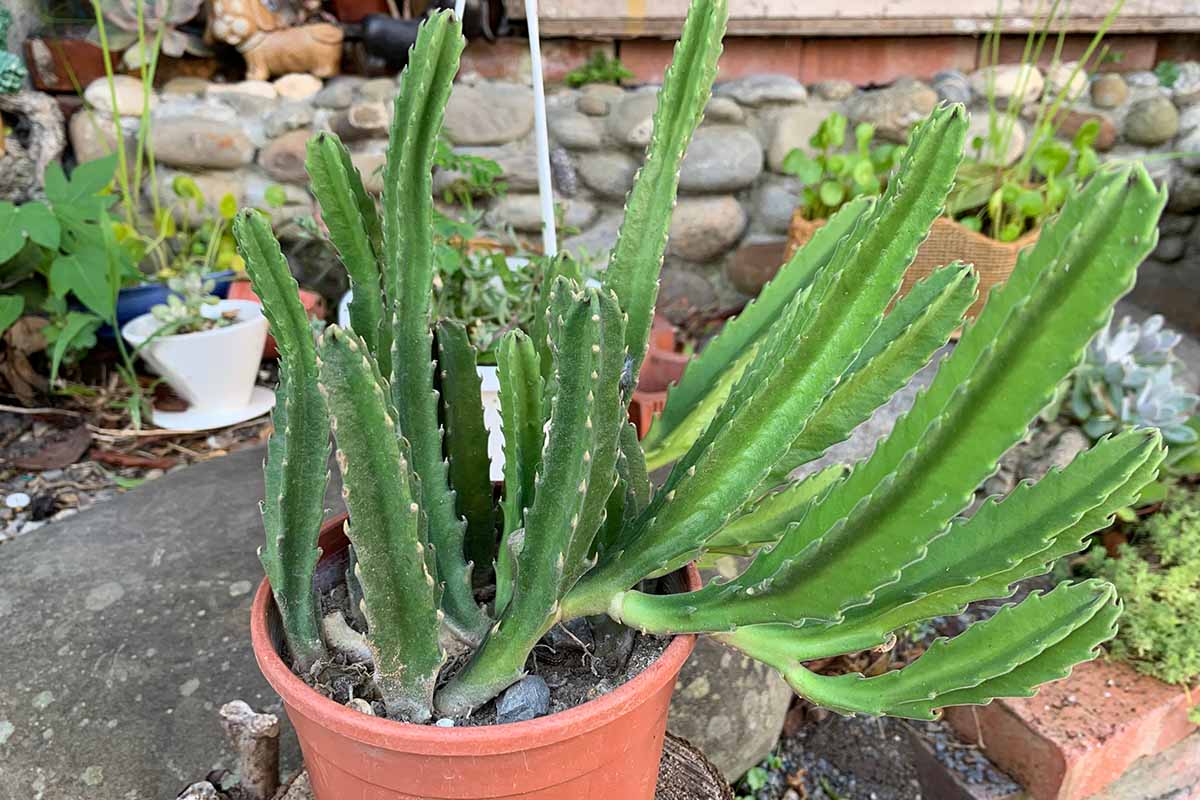
When you do decide to repot, choose a fairly shallow container – no more than four or five inches is deep enough – and make sure it has drainage holes in the bottom.
And if you live in a humid environment, using an unglazed clay pot will permit the growing medium to dry more easily.
Where to Buy Starfish Flower
Not as common as aloe vera or jade plant, this stapeliad can sometimes be found from plant vendors who specialize in succulents.

Starfish Flower S. Grandiflora
If you’d like to grow one of your own, you can purchase a small starfish flower specimen in a four-inch pot via Amazon.
Managing Pests and Disease
Experienced houseplant parents will be no strangers to the likes of mealybugs, the main pest likely to affect these succulent plants.
When they are present, these fluffy little white insects suck nutrients from the stems of the plant, which can weaken it. Making matters worse, the excretions of these insects are sticky and can allow fungal pathogens to gain a foothold, eventually causing the plant’s roots or stems to rot.
If you find mealybugs on your plant, you can kill them by applying neem oil, a product that is nontoxic to humans and pets. Neem oil will get rid of your mealybug problem, and help take care of any fungal pathogens as well.
Emily’s Naturals Neem Oil is a product that comes with small packets of neem oil and castile soap as well as an empty spray bottle. When you’re ready to use it, mix a packet each of neem oil and castile soap in the spray bottle with water from your own faucet.
Emily’s Naturals Neem Oil comes in a kit ready to make 48 ounces of neem oil spray and is available for purchase via Walmart.
Be sure to test a small patch of stem first to check your plant’s reaction to the product.
After applying, keep your plant out of direct sun for a few days – oil on the plant tissue can cause burning in direct sun.
You may need to reapply the neem oil once a week for a few weeks until the pests are gone, but don’t give up – this treatment does work. Be sure to spray the base of the plant and the growing medium as well.
If you’re dealing with rotting stems, the best recourse may be to prune off any healthy stems and propagate them, giving the houseplant a second chance.
You can learn more about rotting in succulents with our article.
Best Uses of Starfish Flower
Starfish flower can cheer up a space by gracing a table top or window sill – or it can be situated in a wall planter or hanging planter.
In fact, stapeliads are among the best trailing cacti and succulents for hanging baskets!
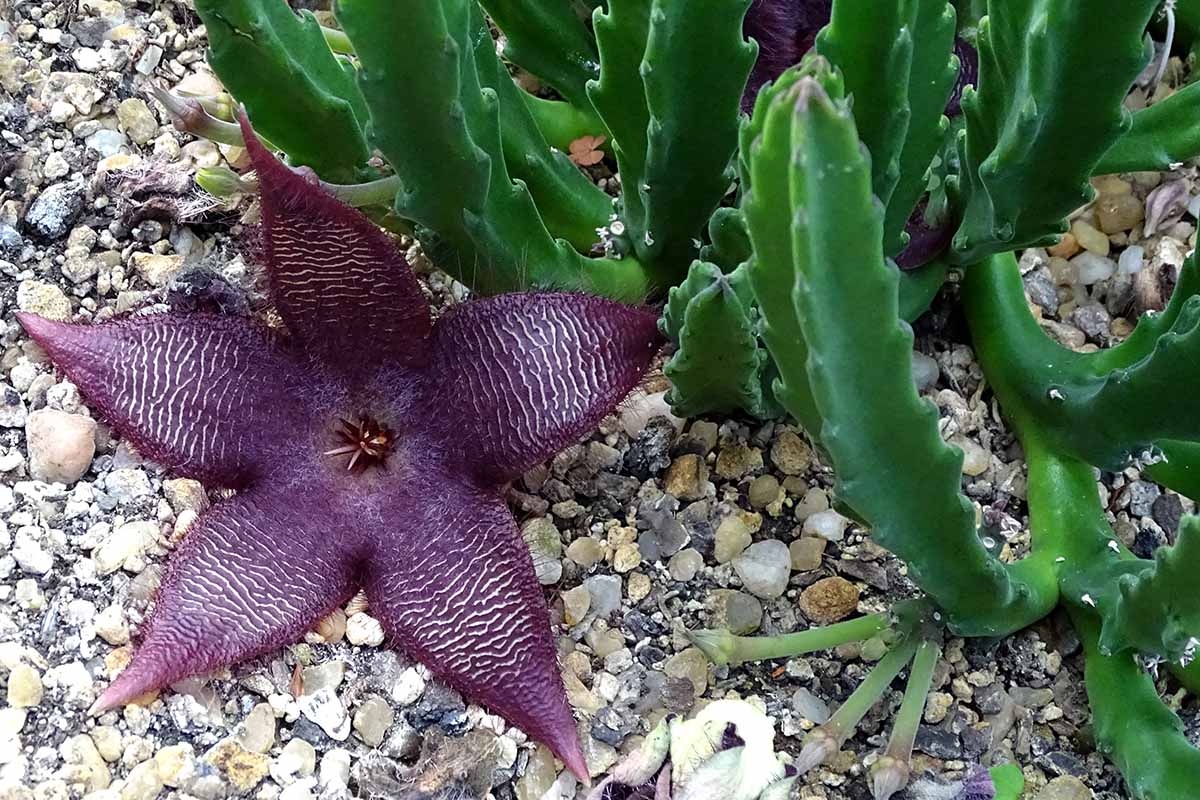
They can also be combined with other types of fleshy plants in mixed succulent planters.
Or why not get whimsical and include these in a succulent fairy garden?
In USDA Hardiness Zones 9 to 11, they can be grown outdoors year-round as long as soil with excellent drainage is available.
These plants are considered to be xerophytes and are especially valued in rock gardens.
Quick Reference Growing Guide
| Plant Type: | Evergreen succulent subshrub | Flower/Foliage Color: | Reddish brown to purple/green to reddish green |
| Native to: | South Africa | Maintenance: | Low |
| Hardiness (USDA Zone): | 9-11 | Tolerance: | Drought, poor soil |
| Bloom Time/Season: | Summer-fall | Soil Type: | Cactus and succulent growing medium |
| Exposure: | Direct sun to light shade | Soil pH: | 6.5-7.5 |
| Time to Maturity: | 3 years, from seed, 1 year from cuttings | Soil Drainage: | Well-draining |
| Spacing: | 1/2-1 inch (cuttings), 1 inch (seeds) | Attracts: | Flies |
| Planting Depth: | Cover root ball (transplants), 2 inch (cuttings), barely covered (seeds) | Uses: | Hanging baskets, mixed succulent planters, succulent fairy gardens, wall planters |
| Height: | Up to 12 inches | Order: | Gentianales |
| Spread: | 20 inches | Family: | Apocynaceae |
| Water Needs: | Low | Genus: | Stapelia |
| Common Pests and Diseases: | Mealybugs, stapeliad snout beetle, wooly aphids; Damping off, root rot, stem rot | Species: | Grandiflora |
The Star of the Succulent Show
Simple to care for, fun to propagate, and featuring incredible blooms that need little coaxing, starfish flower makes a wonderful succulent houseplant provided you have plenty of sunshine to keep it happy.
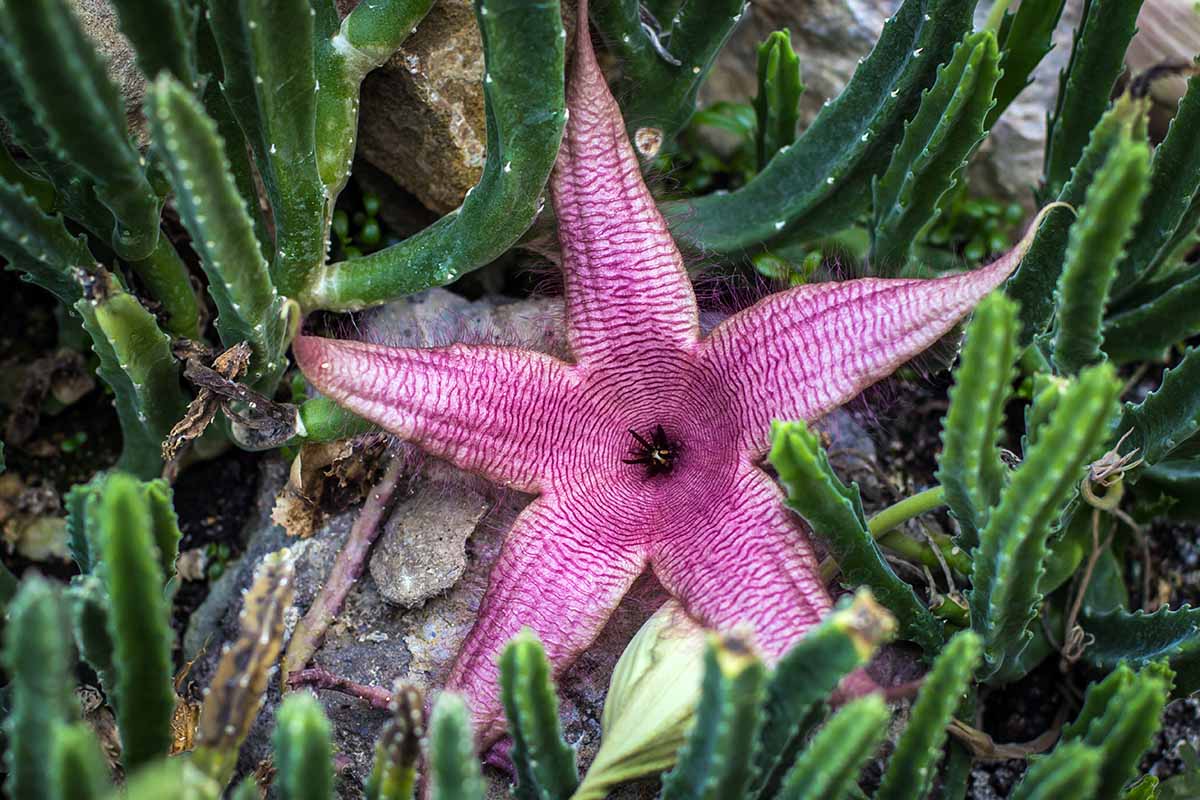
Are you growing S. grandiflora or one of its carrion flower producing relatives? Feel free to share your experiences with our readers below in the comments section.
And let us know if you need any help with a plant problem or with identifying the species of your particular starfish flower – we’d be happy to help!
While you’re exploring the wonderful world of succulents, how about some further reading right here?


